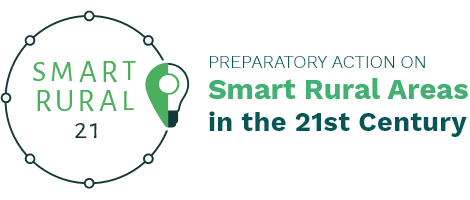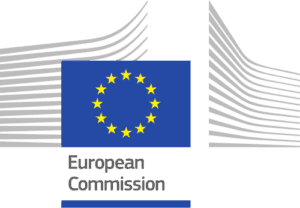Smart Solutions
Community Food Lab
A concept that uses a community space to provide food and cooking-related training courses aimed at the local population.
Implemented in : La Alberca
Country : Spain
What’s the solution?
The Community Food Lab uses a community space equipped with kitchen facilities (ovens, microwaves, sinks etc.) and modern equipment, including advanced food processing tools in order to teach and train the local population in culinary and preservation techniques. Training also focuses on the use of the different equipment provided.
Courses focus on typical local food products cultivated in the area, building the capacity of local people to process the food locally. Course participants learn to transform produce from local gardens, orchards and forests into products that can be marketed and consumed locally. The aim is to enable and encourage individuals and start-ups to make preserves and other foods from local produce, which they can then sell.
The Community Food Lab also provides a space where the local population and new entrepreneurs can meet and exchange around new products, recipes and business ideas.
What makes it smart?
The solution is smart because it helps overcome obstacles that would be big for individuals, but in a community project shrink in scale. Entrepreneurs can learn techniques and develop recipes without first having to invest in the equipment and space, share knowledge and create networks.
With a moderate effort, it sets into motion progress towards several goals:
- conserving landscape features;
- providing local food, reducing waste and transport;
- conserving culinary heritage;
- generating local value added, entrepreneurship, employment;
- fostering local networks to approach a circular economy;
- signalling recognition of local small-scale production and therefore a perspective for the rural economy.

How is the solution implemented?
- Identify interest and need.
- Formulate goals and plans. Include stakeholders and (prospective) participants, and continuously develop and revaluate goals and plans together with them.
- Secure long-term funding as well as set-up cost.
- Find a suitable room.
- Set up institutional structure. We recommend remaining within an organisation that has the necessary resources and provides continuity, such as an association, foundation or public administration, or involve education institutions. You might also find partners in agricultural and culinary organisations, chambers of commerce etc. It may be possible to start an association specifically to operate the Food Lab once the project is underway and a network of supporters and participants has formed. Plan for the time after initial funding has ended.
- Check requirements for room and equipment for food production with health authority.
- Make necessary changes in the room.
- Consult with future instructors and other experts on equipment needs.
- Design courses, hire instructors for them, advertise them.
- Purchase equipment and materials. Do not expect to be done with one round of purchases. New courses and development of products lead to new needs in terms of machinery and utensils.
- Continuously look at needs for training. This may go further than culinary techniques. If the goal is for the participants to be able to commercialise products they develop, there is probably a need for training on topics of business administration, regulations, setting up cooperatives, subsidy programmes for entrepreneurs etc. You may find partners for such training needs in chambers of commerce, associations of farmers and of cooperatives, education institutions, existing entrepreneurship support programmes etc.
In what local context has it been applied?
La Alberca is one of 15 villages located within the Natural Park ‘Las Batuecas-Sierra de Francia’ in the south-west of the province of Salamanca (Castile and Léon, Spain) near the regional border with Extremadura. The park is a protected Natural Area of ca. 30,000 ha. Its 15 municipalities have an average population of 350 inhabitants per municipality, a majority of the population is elderly and there are few opportunities for young people. The most important economic factor is tourism, followed by construction and agriculture.
This is a rugged area with steep slopes. Traditional agriculture involves terraces on the slopes, built with stone walls. Cherries, wine, olives and chestnuts are important traditional crops of the area. Wine cellars and two oil mills locally process them. In addition, subsistence farming with orchards for local production plays a large role, and recently new products such as pistachio, kiwi, blueberries and mushrooms on stumps have been introduced. There are, however, currently no companies processing these products, so the local value added is limited.
Produce from the village gardens and orchards as well as wild berries and mushrooms are no longer as much a part of the daily lives of local residents as they were for older generations. Gardens and orchards as traditional landscape elements need to be used and maintained to prevent their decline, and recipes and food preservation techniques need to be transferred to younger generations.
Who was behind the implementation?
The Castilla y León Natural Heritage Foundation established the Community Food Lab. The Foundation also manages the visitor centres in the natural spaces of the region of Castilla y León.
Local groups are helping with the dissemination of activities.
What was the local journey?
- The Castilla y León Natural Heritage Foundation conducted a diagnosis of the needs of the area, including an assessment of the make-up and characteristics of the area and local population.
- This exercise identified a demand for training and for new products. It highlighted in particular that there was a lack of local processing capacity (knowledge and equipment) in the area, which meant that the local economy was left reliant on the income from primary production alone. Increasing the capacity of local people and potential entrepreneurs to process the products of orchards, gardens and forests was therefore identified as a key source of added value for the local economy.
- In order to do this, a place of work with equipment and machinery that individuals could not easily afford was needed. Also needed was a place for the exchange of knowledge and ideas. Collectively, it was hoped, participants would develop visions of new markets, strategies, marketing projects, new products, etc., with the long-term goal of setting of new enterprises that want to work in the transformation and creation of new agri-food products.
- The local public was informed about the idea of creating the Food Lab and requests for participation were collected.
- The Castilla y León Natural Heritage Foundation requested a grant through the Spain-Portugal Interreg programme, and the application, based on circular economy objectives and strategies, was successful. Interreg Spain-Portugal supports socio-economic development based on sustainability and respect for the natural and cultural heritage.
- With the funding provided, which included limited funds for personnel, and its own staff, the Foundation was able to undertake the design and set up of the Community Food Lab in the Natural Park visitor centre, starting in 2020. The kitchen had to be tiled with non-slip floor and drain as well as ventilation to make it ready for use.
- Anticipating what equipment and materials would be needed was an initial difficulty. Information was gathered from food processing companies and experts who were also later hired as instructors for the Food Lab and initial purchases of equipment such as a dehydrator, autoclave, cookers, grinder, scales, thermometers were made. When the Food Lab was in use, further needs for machinery and utensils for different techniques became evident and more equipment had to be acquired.
- Personnel of the Foundation designed courses that interest the population and generate momentum to set up companies for the transformation of gardens and wild products. Courses carried out until December 2021:
- Course on transformation and conservation of orchard products (two editions)
- Mushroom transformation course (two editions)
- Workshop about ecological agriculture
- Workshop about the set-up of agri-food cooperatives
- Mushroom growing on wood workshop
- Pastry and fast food with mushrooms workshop
- The COVID-19 pandemic was one of the main barriers because it necessitated smaller groups and special hygiene measures.
- The products produced at the lab are not commercialised yet. Trials with the products to improve recipes are ongoing.
What have been the main outputs & results?
- 36 locals have already participated in courses in the Lab.
- A small group of people who want to pursue commercialising some products and joint marketing – potentially through formation of a cooperative venture - has formed in the courses.
- Healthy local food was made available to others and transportation of foods reduced
- The Provincial authority of Avila has followed the example in another rural area, and a mobile Food Lab is being started by the Natural Heritage Foundation.
What does it bring the village/community?
- The Community Food Lab expects to make an important contribution to the local economy by increasing the local value added in the food production chain. Rather than relying on sale of primary products only, local people can transform local and wild crops into marketable products, which they can sell at significantly higher prices.
- The increase in capacity to produce and sell processed foods will create job opportunities – both in the form of entrepreneurship and related jobs created.
- Making new local marketable products is also expected to generate economic incentives to continue and expand the use of traditional techniques and resources in agriculture and foraging as well as in cookery. It also has the potential to create additional jobs in related sectors, such as catering.
- This way, sustainable use of local resources, culinary heritage, and traditional gardens and orchards can be maintained, and entrepreneurship is fostered.
What’s needed
Financial resources
Main types of cost:
Financial needs:
Set up / Investment costs: EUR 10 500 for purchasing materials and machinery.
The room at the Natural Park visitor centre was available for the project free of charge.
Ongoing costs: EUR 15 300 for instructors; this also includes some training for the Textile Lab that was started at the same time.
Two administration and project management positions who devote 20% of their working day to the Food Lab.
Funding received:
| Source | Amount | Funded |
|---|---|---|
| Interreg, funded by the European Regional Development Fund (ERDF) | 17,800 € | 75% co-funding of all set-up costs and some running costs (administrative position) |
| Castilla y León Natural Heritage Foundation | 8,000 € | 25% co-funding of set-up costs plus all of remaining running costs |
Human resources
Initially two persons at 20 % of their working day.
• One is organising the training, hiring teachers and promoting the Community Food Lab.
• The other is helping with the set-up, but will leave the project once it is firmly established.
Physical resources
• A kitchen
• All the necessary equipment to experiment and create new products and comply with health regulations, including: dehydrator, cookers, chopper, grinder, mincer, vacuum packer, scales and an autoclave, which is a machine used to carry out industrial and scientific processes requiring elevated temperature and pressure.
What to do…
- Stay focused and work to the strengths of the area by limiting offerings to specific fields, such as, in this case, the processing of vegetables and fruits.
- Adapt courses etc. to the needs and plans of participants.
- Think about long-term organisational structure early on.
and not to do
- Don’t finalise plans without involving the target audience.

